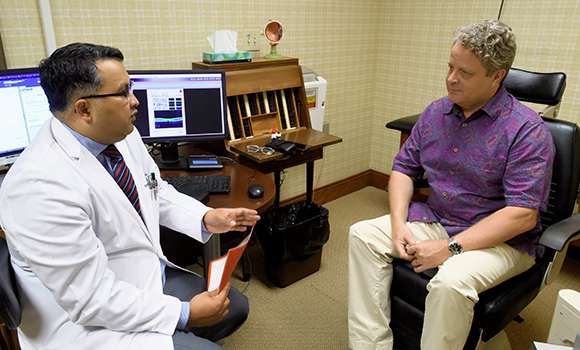Imagine you’re sitting alone in an exam room, struggling to catch what your doctor is saying.
Because you are hearing impaired, you ask the doctor to repeat himself, but he seems irritated. Eventually, you stop asking. You agree to a medical test without understanding what it’s about. And you leave, unsure of your diagnosis.
All of this happened to Alexis Johnson, one of several patients who shares her health care journey in 2019’s “Narrating Patienthood: Engaging Diverse Voices on Health, Communication, and the Patient Experience,” edited by UNC Greensboro Professor of Communication Studies Peter M. Kellett.
Through compelling first-hand accounts and interviews with researchers, patients share a variety of stories – often exposing how stereotypes and discrimination have impacted their care.
“Numbers can really count in medical research, but I don’t talk to thousands of people,” Dr. Kellett says. “For me it’s about getting into a few people’s lives in a really deep way. This helps us learn how humans talk about, live with, and care for others with diseases and illnesses. The approach gives us a valuable understanding of patient experience that huge medical studies can’t offer.”
While Kellett has published extensively on narrative approaches to conflict communication, his interest in health communication only began when he was a patient himself. In 2011, he was diagnosed with macular telangiectasia, which leads to loss of vision.
“At that moment,” Kellett recalls, “I wished I had a coach who could explain what was happening, what to do, and how my life story would be impacted by this condition. We’re narrative creatures. We want the full story, and we rarely have that.”
Kellett wrote a book on his own experience, published in 2017. But he wanted to explore how patients different from him – in race, class, gender, age, sexual identity, or disability – encountered health care communication and the impact that had in shaping their health care experiences. That led to “Narrating Patienthood.”
A personal story in one chapter, for instance, encourages readers to examine why African Americans use hospice care at a much lower rate. Another account follows a young mother of limited means, misdiagnosed by more than five physicians until she finally finds a practitioner who discovers she has Stage 4 breast cancer. “Can you please direct me to a doctor that has a heart?” she asks at one point in her journey.
The publication is part of the “Lexington Studies in Health Communication” series. While the series mostly targets academic audiences, Kellett says this entry will also resonate with patients, family members, care providers, health system administrators, and medical schools teaching narrative approaches to medicine.
“Stories have a way of lifting the lid off the interpersonal world,” Kellett says. “You recognize: That’s another human being like me. He or she is different from me also, but there’s something in their story that I can relate to, and that creates a powerful connection.”
This post originally appeared in UNCG Research Magazine. To read other stories about research, scholarship, and creative activity, visit researchmagazine.uncg.edu.
Story by Dawn Martin
Photography by Martin W. Kane, University Communications



